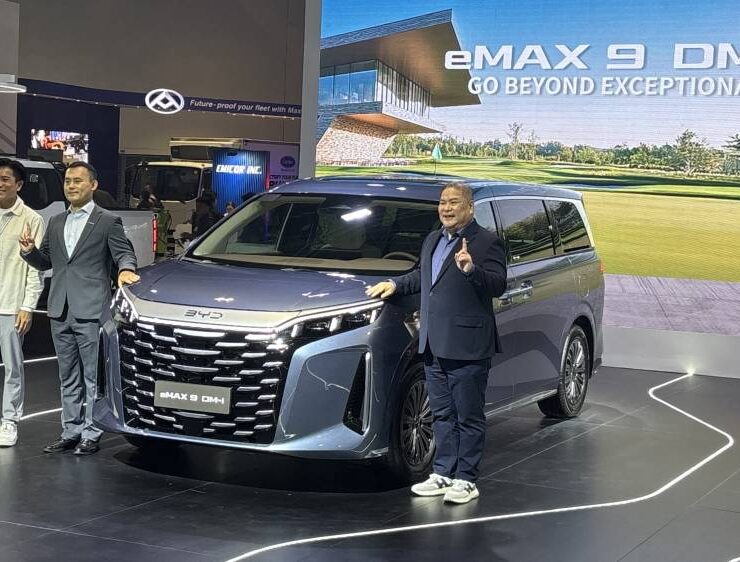2025 Honda City RS: Excellence without electrification

The notion of excellence is not only highly subjective, but also highly relative.
Politics is a great example – one person could truly believe in somebody that another person wouldn’t trust with a child’s piggy bank. Perhaps it is this fractured socio-political outlook, which is a corollary of our innumerable geographic and cultural divides, that has defined our chaotic political landscape over the last half-century.
An even more relatable example is singing. Given our obsession with videoke, along with seeming to have internationally acclaimed singers in every eskinita the length and breadth of the land, one’s idea of a great singer may be another’s reason to bury his or her head into the ground.
Indeed, being universally renowned for excellence is an exceedingly difficult task. And in the automotive space, the latest-generation Honda City has achieved just that, easily outdoing its traditional subcompact-sedan rivals with its amalgam of sheer competence and technological supremacy (Honda SENSING being standard across all variants is a feat worth emulating).
But given that there are many new contenders popping up, does the top-of-the-line 2025 Honda City RS still sing a sweet tune or has it become as passe as a political jingle?
Racy looks
The latest-generation City may be a familiar shape to many, but it remains handsome.
This RS variant distinguishes itself from its more inexpensive siblings with its front air dam, side skirts and aggressive faux rear diffuser, seemingly taking inspiration from the Civic Type R. The fabulous Ignite Red Metallic paint job also works well with the gloss-black accents on the front grill, side mirrors and ducktail trunk spoiler.
The top-spec City is also the only one with powerful LED headlights (something I’d like to see in all City variants), as well as two-tone, 16-inch alloy wheels wrapped in rather narrow 185/55 series tires. A more aggressive wheelset, akin to the one in the Civic RS models, would better suit this car’s sportier character.

Lovely interior
The City RS is also the only variant with full leather upholstery that includes red accents on the supportive seats and the dashboard.
Although I find the interior too plasticky, the controls are wonderfully simple to use – no need to dig through 47 menus in a touchscreen to change the temperature on the excellent climate-control system (I’m looking at you, BYD). Speaking of which, you get an 8-inch touchscreen infotainment system with wireless Apple CarPlay and Android Auto.
The latter may have a blurry rear camera, but you can at least take solace in the superb space for five passengers – those at the rear get their own air vents, as well as adjustable head restraints and three-point seatbelts. Also, the voluminous trunk offers 519 liters of space, although split-folding rear seats would have made it more usable.
Finally, the City RS is the only variant with standard front, side and curtain airbags (again, something that should be standard across all City models). But that wonderful Honda SENSING advanced driver assistance system (ADAS) means you get life-saving features like adaptive cruise control, lane-keep assist and collision-mitigation braking.
Pace and parsimony
While the vast majority of subcompact sedans are about as easy-going to drive as taking a nap, the City has long distinguished itself by being reasonably fun from behind the wheel.
All variants get Honda’s proven 1.5-liter, twin-cam, 16-valve inline-4 gasoline engine pumping out 119 horsepower and 145 Newton-meters of torque. This is mated to a well-tuned continuously variable transmission (CVT), which is a far, far cry from Honda Cars’ first attempt at putting a CVT in the City.
All this results in hearty acceleration at any speed, along with stellar fuel consumption – we got 10 to 13 kilometers per liter in the city and 21 to 24 kilometers per liter on the expressway. The City RS is also blessed with one of the suspension setups in its class, offering a composed ride over any road, in spite of the small and noisy tires.
Making this an even more appealing urban runabout is the small turning radius, the light and responsive (albeit numb) steering and the powerful brakes that are operated by a rather spongy pedal. Some of the Civic RS’ driving magic would do wonders for its little cousin.
Perhaps the only rival that can simultaneously outpace and out-economize the City RS is the BYD Seal 5 DM-i Premium, which packs 194 horsepower, 325 Newton-meters of torque and around 100 kilometers of battery-only range from its electrified powerplant.
Solid, but for how long?
At P1,138,000, the 2025 Honda City RS remains among the best of the top-spec subcompact sedans.
For traditional drivers, it offers a capacious cabin and good driving dynamics, all while being easy to use and economical. Its closest competitor is the P1,155,000 Nissan Almera VL, which offers similar equipment levels and perkier performance, thanks to its turbocharged 1.0-liter, inline-3 gasoline engine.
But like with politicians and singers, it’s the rising stars (from the People’s Republic) that work the hardest to grab your attention – there’s the highly competent MG GT Sport at P1,193,888 and the aforementioned Seal 5 DM-i Premium at P1,198,000. Both are larger, faster and more technologically advanced, but the lack of ADAS is rather unfortunate.
Then again, this is Honda Cars we’re talking about. And it does produce a hybrid-electric version of the City in other markets.
Excellence may be subjective and relative, but expect this Japanese carmaker to fight hard to retain the universal appeal of its little sedan.





















